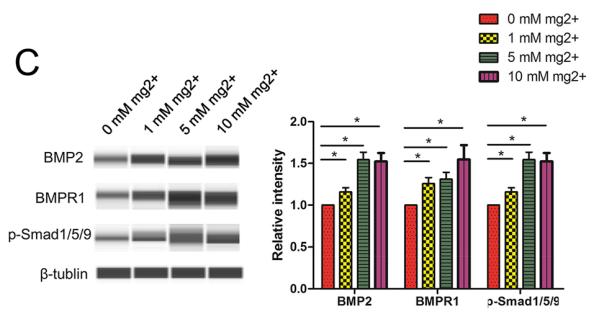MYH9 Antibody - #AF4725
| Product: | MYH9 Antibody |
| Catalog: | AF4725 |
| Description: | Rabbit polyclonal antibody to MYH9 |
| Application: | WB |
| Cited expt.: | WB |
| Reactivity: | Human, Mouse, Rat |
| Prediction: | Rabbit, Dog |
| Mol.Wt.: | 226kDa; 227kD(Calculated). |
| Uniprot: | P35579 |
| RRID: | AB_2844726 |
Related Downloads
Protocols
Product Info
*The optimal dilutions should be determined by the end user.
*Tips:
WB: For western blot detection of denatured protein samples. IHC: For immunohistochemical detection of paraffin sections (IHC-p) or frozen sections (IHC-f) of tissue samples. IF/ICC: For immunofluorescence detection of cell samples. ELISA(peptide): For ELISA detection of antigenic peptide.
Cite Format: Affinity Biosciences Cat# AF4725, RRID:AB_2844726.
Fold/Unfold
BDPLT 6; BDPLT6; Cellular myosin heavy chain; Cellular myosin heavy chain type A; DFNA 17; DFNA17; EPSTS; FTNS; MGC104539; MHA; MYH 2A; MYH 9; MYH2A; MYH9; MYH9_HUMAN; MYHas8; MyHC 2A; MyHC IIa; MyHC2A; MyHCIIa; MYHSA 2; MYHSA2; Myosin 9; Myosin heavy chain 9; Myosin heavy chain 9 non muscle; Myosin heavy chain; Myosin heavy chain non muscle IIa; Myosin heavy chain nonmuscle IIa; Myosin heavy polypeptide 2; Myosin heavy polypeptide 9 non muscle; Myosin-9; Myosin9; NMHC II A; NMMHC A; NMMHC II a; NMMHC II-a; NMMHC IIA; NMMHC-A; NMMHC-IIA; NMMHCA; Non muscle myosin heavy chain A; Non muscle myosin heavy chain; Non muscle myosin heavy chain II A; Non muscle myosin heavy polypeptide 9; non-muscle IIa; Non-muscle myosin heavy chain A; Non-muscle myosin heavy chain IIa; Nonmuscle myosin heavy chain A; Nonmuscle myosin heavy chain II A; type A;
Immunogens
A synthesized peptide derived from human MYH9, corresponding to a region within C-terminal amino acids.
- P35579 MYH9_HUMAN:
- Protein BLAST With
- NCBI/
- ExPASy/
- Uniprot
MAQQAADKYLYVDKNFINNPLAQADWAAKKLVWVPSDKSGFEPASLKEEVGEEAIVELVENGKKVKVNKDDIQKMNPPKFSKVEDMAELTCLNEASVLHNLKERYYSGLIYTYSGLFCVVINPYKNLPIYSEEIVEMYKGKKRHEMPPHIYAITDTAYRSMMQDREDQSILCTGESGAGKTENTKKVIQYLAYVASSHKSKKDQGELERQLLQANPILEAFGNAKTVKNDNSSRFGKFIRINFDVNGYIVGANIETYLLEKSRAIRQAKEERTFHIFYYLLSGAGEHLKTDLLLEPYNKYRFLSNGHVTIPGQQDKDMFQETMEAMRIMGIPEEEQMGLLRVISGVLQLGNIVFKKERNTDQASMPDNTAAQKVSHLLGINVTDFTRGILTPRIKVGRDYVQKAQTKEQADFAIEALAKATYERMFRWLVLRINKALDKTKRQGASFIGILDIAGFEIFDLNSFEQLCINYTNEKLQQLFNHTMFILEQEEYQREGIEWNFIDFGLDLQPCIDLIEKPAGPPGILALLDEECWFPKATDKSFVEKVMQEQGTHPKFQKPKQLKDKADFCIIHYAGKVDYKADEWLMKNMDPLNDNIATLLHQSSDKFVSELWKDVDRIIGLDQVAGMSETALPGAFKTRKGMFRTVGQLYKEQLAKLMATLRNTNPNFVRCIIPNHEKKAGKLDPHLVLDQLRCNGVLEGIRICRQGFPNRVVFQEFRQRYEILTPNSIPKGFMDGKQACVLMIKALELDSNLYRIGQSKVFFRAGVLAHLEEERDLKITDVIIGFQACCRGYLARKAFAKRQQQLTAMKVLQRNCAAYLKLRNWQWWRLFTKVKPLLQVSRQEEEMMAKEEELVKVREKQLAAENRLTEMETLQSQLMAEKLQLQEQLQAETELCAEAEELRARLTAKKQELEEICHDLEARVEEEEERCQHLQAEKKKMQQNIQELEEQLEEEESARQKLQLEKVTTEAKLKKLEEEQIILEDQNCKLAKEKKLLEDRIAEFTTNLTEEEEKSKSLAKLKNKHEAMITDLEERLRREEKQRQELEKTRRKLEGDSTDLSDQIAELQAQIAELKMQLAKKEEELQAALARVEEEAAQKNMALKKIRELESQISELQEDLESERASRNKAEKQKRDLGEELEALKTELEDTLDSTAAQQELRSKREQEVNILKKTLEEEAKTHEAQIQEMRQKHSQAVEELAEQLEQTKRVKANLEKAKQTLENERGELANEVKVLLQGKGDSEHKRKKVEAQLQELQVKFNEGERVRTELADKVTKLQVELDNVTGLLSQSDSKSSKLTKDFSALESQLQDTQELLQEENRQKLSLSTKLKQVEDEKNSFREQLEEEEEAKHNLEKQIATLHAQVADMKKKMEDSVGCLETAEEVKRKLQKDLEGLSQRHEEKVAAYDKLEKTKTRLQQELDDLLVDLDHQRQSACNLEKKQKKFDQLLAEEKTISAKYAEERDRAEAEAREKETKALSLARALEEAMEQKAELERLNKQFRTEMEDLMSSKDDVGKSVHELEKSKRALEQQVEEMKTQLEELEDELQATEDAKLRLEVNLQAMKAQFERDLQGRDEQSEEKKKQLVRQVREMEAELEDERKQRSMAVAARKKLEMDLKDLEAHIDSANKNRDEAIKQLRKLQAQMKDCMRELDDTRASREEILAQAKENEKKLKSMEAEMIQLQEELAAAERAKRQAQQERDELADEIANSSGKGALALEEKRRLEARIAQLEEELEEEQGNTELINDRLKKANLQIDQINTDLNLERSHAQKNENARQQLERQNKELKVKLQEMEGTVKSKYKASITALEAKIAQLEEQLDNETKERQAACKQVRRTEKKLKDVLLQVDDERRNAEQYKDQADKASTRLKQLKRQLEEAEEEAQRANASRRKLQRELEDATETADAMNREVSSLKNKLRRGDLPFVVPRRMARKGAGDGSDEEVDGKADGAEAKPAE
Predictions
Score>80(red) has high confidence and is suggested to be used for WB detection. *The prediction model is mainly based on the alignment of immunogen sequences, the results are for reference only, not as the basis of quality assurance.
High(score>80) Medium(80>score>50) Low(score<50) No confidence
Research Backgrounds
Cellular myosin that appears to play a role in cytokinesis, cell shape, and specialized functions such as secretion and capping. During cell spreading, plays an important role in cytoskeleton reorganization, focal contacts formation (in the margins but not the central part of spreading cells), and lamellipodial retraction; this function is mechanically antagonized by MYH10.
ISGylated.
Ubiquitination.
Cytoplasm>Cytoskeleton. Cytoplasm>Cell cortex.
Note: Colocalizes with actin filaments at lamellipodia margins and at the leading edge of migrating cells (PubMed:20052411). In retinal pigment epithelial cells, predominantly localized to stress fiber-like structures with some localization to cytoplasmic puncta (PubMed:27331610).
In the kidney, expressed in the glomeruli. Also expressed in leukocytes.
The rodlike tail sequence is highly repetitive, showing cycles of a 28-residue repeat pattern composed of 4 heptapeptides, characteristic for alpha-helical coiled coils.
Belongs to the TRAFAC class myosin-kinesin ATPase superfamily. Myosin family.
Research Fields
· Cellular Processes > Cellular community - eukaryotes > Tight junction. (View pathway)
· Cellular Processes > Cell motility > Regulation of actin cytoskeleton. (View pathway)
· Human Diseases > Infectious diseases: Bacterial > Salmonella infection.
References
Application: WB Species: human Sample: PLC-PRF-5 and Hep3B cells
Restrictive clause
Affinity Biosciences tests all products strictly. Citations are provided as a resource for additional applications that have not been validated by Affinity Biosciences. Please choose the appropriate format for each application and consult Materials and Methods sections for additional details about the use of any product in these publications.
For Research Use Only.
Not for use in diagnostic or therapeutic procedures. Not for resale. Not for distribution without written consent. Affinity Biosciences will not be held responsible for patent infringement or other violations that may occur with the use of our products. Affinity Biosciences, Affinity Biosciences Logo and all other trademarks are the property of Affinity Biosciences LTD.
